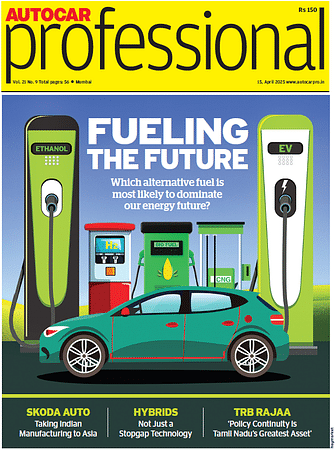Tata Motors reiterates commitment to circularity with "TATVA" framework
"Also, we are on track to become net positive on water and achieve 100% usage of renewable electricity in line with our sustainability roadmap," Wagh noted.
Emphasising Tata Motors' efforts towards a circular economy with the launch of the "TATVA" framework, Girish Wagh, Executive Director, stated that this systematic approach embeds circularity principles across the entire business, focusing on energy, materials, product lifetime, and utilistion.
Tata Motors is also bolstering its end-of-life vehicle management with the operationalisation of five vehicle scrappage facilities under the "Tata Re.Wi.Re" brand. The commercial vehicle (CV) segment is targeted to reach net zero carbon emissions by 2045.
"Also, we are on track to become net positive on water and achieve 100% usage of renewable electricity in line with our sustainability roadmap," Wagh noted in the report. Around 40% of Tata Motor's electricity needs in India come from renewable sources.
According to him, Tata Motors has made progress in its sustainability journey across all three pillars of Aalingana – Net Zero, Circularity and Biodiversity.
"In line with our 2045 net zero goal and the science-based approach, we aligned the product strategy across all business lines to a decarbonisation trajectory and thus accelerated our efforts towards faster adoption of EVs, hydrogen-based vehicles and renewable energy. We received FAME and PLI certifications for Ace EV and 12m E-bus models, first in their respective category" added Wagh.
He also noted the unveiling of the company's state-of-the-art R&D facilities for hydrogen internal combustion engine at its Engineering Research Centre in Pune, as well as operationalised a Hydrogen ICE engine manufacturing facility within Tata Cummins.
The company management highlighted that designing for circularity is a key component of the circular economy. Maximum value is drawn when all the circular business models of servitization, Longer durable life and reuse are deployed in conjunction, ensuring recurring revenues throughout the lifecycle, the report added.
Furthermore, the circular business models enable creation of economic value at every stage of a product’s lifecycle by ensuring products retain their original identity and function. Circular business models allow higher utilisation and incentivize more reliable and durable products while enabling the reuse and refurbishment of products and components even as they are designed, the report further added.
RELATED ARTICLES
Ather Energy IPO Subscribed 1.5x, Signals Revival of Mainboard Market
Strong retail and employee participation help Ather sail through IPO; anchor round valuation places it at a premium to l...
April 2025 PV Sales Preview: Momentum Sustains, But Inventory and Retail Weakness Raise Red Flags
Mahindra & Mahindra (M&M) is leading the charge and is expected to retain its position as the second-largest PV manufact...
AKWEL Reports €255.6M in Q1 2025 Turnover Amid Global Automotive Market Slowdown
Regionally, the EMEA zone (Europe, Middle East, and Africa) remained AKWEL's largest contributor with €170.7 million in ...






 31 May 2024
31 May 2024
 3443 Views
3443 Views





 Autocar Professional Bureau
Autocar Professional Bureau



 Arunima Pal
Arunima Pal

